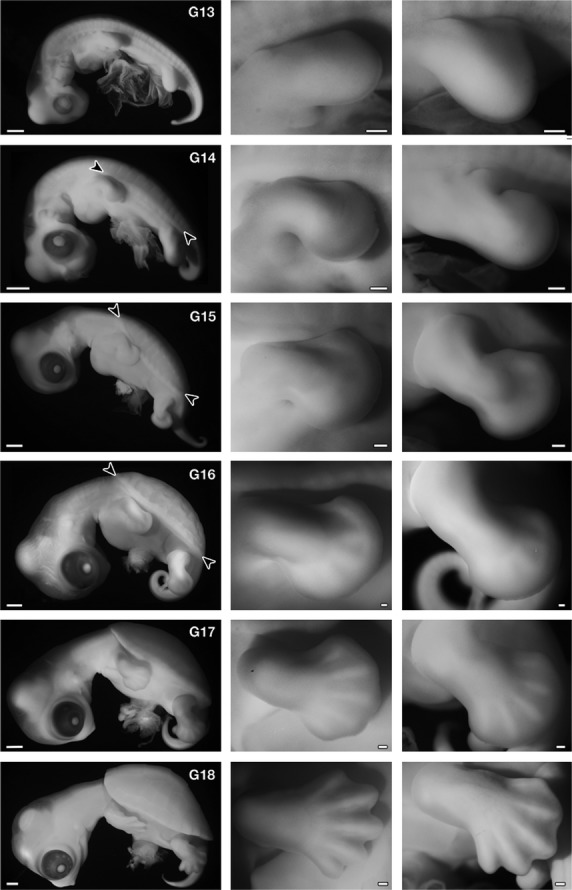Fig. 2.

Development of Trachemys scripta. (Left) Left lateral view of the embryos. (Middle) Forelimb. (Right) Hindlimb. In G stage 14, carapacial ridge (CR) appears as a longitudinal ridge in the flank (arrowheads), and in stage 15, the CR acquires a segmental pattern (arrowheads). The ridge comprises the margin of the carapace in the latter stages. The morphology of the forelimb bud is comparable to that in Chelydra serpentina (Yntema, 1968) and Pelodiscus sinensis (Tokita & Kuratani, 2001) at the same stage. Namely, in G stage 13, the length is longer than the width, and G stage 14 is an early paddle stage with a digital plate, in G stage 15 the digital plate is well formed without a digital groove, in G stage 16 digital ridges appear, in G stage 17 the periphery of the digital plate shows a slight serration and five digits are apparent, and in G stage 18 the periphery of the digital plate is serrated deeply, similar to that of maple leaves. Scale bars: 1 mm (left column), 200 μm (middle and right columns).
